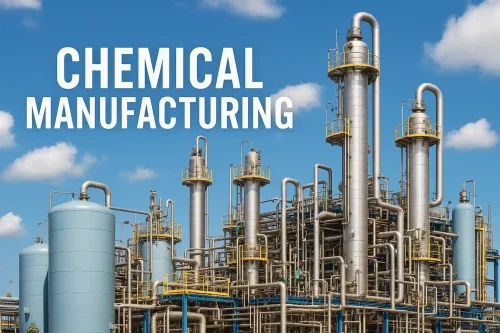Cost and Availability of Lithium Dodecyl Sulfate (LDS) vs. Sodium Dodecyl Sulfate (SDS)
When comparing Lithium Dodecyl Sulfate (LDS) and Sodium Dodecyl Sulfate (SDS), it is crucial to consider their cost and availability. These factors significantly influence the choice of surfactant in various industries and applications. Here’s an in-depth examination of these aspects:
- Market Availability:
Sodium Dodecyl Sulfate (SDS):
Widespread Production: SDS is produced on a large scale globally. It is a common ingredient in many household and industrial products, leading to its widespread availability.
Supply Chain Robustness: The robust supply chain for SDS ensures consistent availability. It is stocked by numerous chemical suppliers and can be sourced easily.
Standardization: SDS is standardized in many laboratory and industrial applications, making it a well-recognized and easily accessible chemical.
Lithium Dodecyl Sulfate (LDS):
Limited Production: LDS is not as commonly produced as SDS. Its specialized applications result in a smaller production scale.
Niche Market: LDS is available in niche markets and might require sourcing from specialized chemical suppliers.
Variable Availability: The availability of LDS can vary depending on the supplier and region, making it less consistently accessible than SDS.
- Cost Factors:
SDS:
Economies of Scale: The large-scale production of SDS leads to economies of scale, reducing its overall cost. It is generally inexpensive and cost-effective for widespread use.
Low Manufacturing Costs: The raw materials and manufacturing processes for SDS are well-established and cost-efficient, contributing to its low market price.
Bulk Purchasing: SDS can be purchased in bulk at a relatively low cost, making it an economical choice for industrial and commercial applications.
LDS:
Higher Production Costs: LDS production might involve higher costs due to the specialized nature of its applications and the smaller scale of manufacturing.
Lithium Sourcing: The cost of lithium, a key component in LDS, can fluctuate based on market demand and availability, impacting the overall cost of LDS.
Limited Economies of Scale: The limited production scale of LDS means it doesn’t benefit as much from economies of scale, making it more expensive per unit compared to SDS.
- Application-Specific Costs:
SDS:
Cost-Effective for General Use: SDS is cost-effective for general cleaning, personal care products, and industrial applications due to its low price and high effectiveness.
Standard Laboratory Reagent: SDS is an affordable reagent for laboratory use, including in molecular biology and biochemistry protocols.
LDS:
Specialized Applications: While more expensive, LDS might be justified in specialized applications where its unique properties offer distinct advantages, such as in certain biochemical or pharmaceutical contexts.
Cost-Benefit Analysis: In applications where LDS provides superior performance or specific benefits, the higher cost could be offset by improved outcomes or efficiencies.
- Economic Impact of Raw Materials:
SDS:
Stable Supply of Raw Materials: The raw materials for SDS, mainly derived from petrochemicals or plant-based sources, are generally stable and not subject to significant market fluctuations.
Lower Raw Material Costs: The raw materials for SDS are relatively inexpensive, contributing to its low overall cost.
LDS:
Lithium Market Dynamics: The cost of lithium can be influenced by its demand in other industries, particularly in battery manufacturing for electric vehicles. This can lead to price volatility for lithium-based compounds like LDS.
Higher Raw Material Costs: The higher cost of lithium as a raw material contributes to the overall higher cost of LDS compared to SDS.
- Regulatory and Environmental Costs:
SDS:
Environmental Regulations: Compliance with environmental regulations regarding the use and disposal of SDS can incur additional costs. This includes managing its impact on aquatic environments and ensuring biodegradability.
Regulatory Approvals: SDS is well-documented and widely approved for use in various applications, minimizing regulatory hurdles and associated costs.
LDS:
Emerging Regulations: The regulatory landscape for LDS might still be developing, potentially leading to additional costs for compliance and environmental impact studies.
Environmental Considerations: Depending on its environmental profile, LDS might incur different costs related to its use and disposal, which could be higher or lower than those for SDS.
- Investment in Research and Development:
SDS:
Established Research: Extensive research on SDS has already been conducted, reducing the need for further investment in understanding its properties and applications.
Lower R&D Costs: The established knowledge base for SDS translates to lower research and development costs for new applications or formulations.
LDS:
Innovative Research Opportunities: LDS represents an area for innovative research, which might require significant investment in R&D to fully understand and exploit its potential.
Higher R&D Costs: Developing new applications and formulations for LDS could involve higher R&D costs compared to SDS, given the need for extensive study and validation.
In conclusion, while SDS benefits from widespread production, low cost, and robust availability, LDS is more specialized, with potentially higher costs and variable availability. The choice between LDS and SDS will depend on the specific requirements of the application, including cost considerations, performance needs, and environmental impact. Understanding these factors helps in making an informed decision about the most suitable surfactant for a given purpose.










